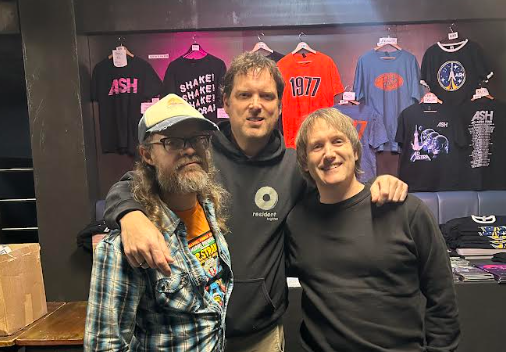Continuing Film & TV’s exploration into narrative film genres; in this feature we tackle the most explosive of all, Action.

It is easy to pin point this genre in the sea of films released: It starts with a grand opening; the panning across the open road or a plane shooting off into the distance that then cuts to the explosion of a title sequence. This is an action film, and by god do the producers need you to know that. The genre can be noted for many things, kicking things off in style is just part of its all-consuming nature.
Like many genres of this industry it can be divided into stylistic eras; for easy exploration and structuring of this I shall be categorising them as ÔÇÿthe classic’, ÔÇÿthe borrowed’ and ÔÇÿthe new’. Action films from each decade have their significance of course: ÔÇÿthe classic’ period in this instance doesn’t detail the films of the early cinema but those that encapsulated the 80s hyper masculine trend ÔÇô you know the type, muscle bound men going full throttle at anyone in their way ÔÇô Die Hard, Predator, Rambo, Lethal Weapon etc. What could be said about 90s action films is that they embody the phrase “if it ain’t broke, don’t fix it ” ÔÇô The decade of the sequels saw Die Hard, Predator and Terminator all get a second round shot at the box office, with pretty much an identical narrative structure but made different by adding a ÔÇÿ2′ to the title. It is pretty evident as to why they didn’t change the structure ÔÇô explosions sell. Heroes sell. Villains sell. It is a genre that plays out the same narratives with every release, and we just need more and more.
The shift in this genres evolution came about when the mainstream took superheroes and the idea of the everyday ÔÇÿhero’ into its heart and so cemented action films at the centre of fictitious dreams held by young viewers; the hope to be saved or save someone. ÔÇÿThe new trend’ returned them to the mainstream and gave them fantastical pictures to endorse their homecoming, whilst also giving those without superpowers a big welcome; Kill Bill, X-Men, Batman Begins, Bond and all of his chapters and not forgetting Iron Man all supported this structure of heroism and its importance to us, the viewer.

Action films are those typified mainly by explosions. Explosions everywhere they can fit into the frame; it’s the sort of genre convention that says “balls to plot development and character construction, let’s see that car explode and that building on fire!” These sequences of violence exacerbate all expectations from the audiences; we root for the heroes just as much as we do the villains (who look totally more suave handling cool looking weaponry). Speaking of which there is no hero without an enemy and action films portray some of the worst of the worst ÔÇô whether it’s the subtleties of Javier Bardem in Skyfall or Heath Ledger’s enigmatic Joker in The Dark Knight Rises.
The main pull of this genre is that it presents believable characters in unbelievable situations. We can agree that a computer programmer can be the saviour of the world in the Matrix trilogy or that a college student can hold the key to the Autobots destruction in Transformers, because they present an everyday character and transform him into a hero (excuse the pun). Whether the leading man be the nerd, the student, the mechanic or even the muscle bound god (think the Rock in The Scorpion King) the leading man is always presented as the ultimate man. He may be flawed and not to everyone’s physical likening, however men want to be and women want to be saved by him. If the power of the hero can help Shia LaBeouf win Megan Fox by the end of Transformers, it reinforces the idea it could happen even to you.
The 2010s are as abundant with sequels, trilogies and series’ just as much as the 90s were ÔÇô trends come back into fashion we know this, and everyone always likes their favourite films getting another slice of the action pie. The best way to describe this genres evolution into the 2010’s would be to entitle it ÔÇÿThe Battle of the CGI War’ ÔÇô and I don’t believe I am overreaching by calling it thus. Inception, Rise of the Planet of the Apes, its sequel Dawn of the Planet of the Apes, The Avengers and Guardians of the Galaxy ÔÇô just to name a few, have all stimulated this genre into spectacle that it is. Long gone are the films of ┬áthe cop chasing the baddies and groups of non-superheroes fighting crime (Though The A-Team, The Expendables, Olympus Has Fallen and White House Down have all made a significant impact to break up this superhero leaning in mainstream pictures).

The most visible development of this genre is its change in visuals. Gone are the days of the one-shot one view point explosions; CGI has taken this genre and ran into the future, literally with some narratives, and is utilised to create not just the collapsing buildings and cityscapes but full on universe bending fight scenes. Thanks to the godfather of action George Lucas and his otherworldly visuals within Star Wars; many films to this day are trying to imitate and make better these stunning visuals.
Sharper, crisper camera lenses gave directors of this bourgeoning genre the freedom to do more than their elder counterparts from earlier decades. Bigger however is not always better, it’s just to make their production competitors look weaker on the market to audiences. It’s not De Niro fighting in the ring in Raging Bull or Arnie battling robots in The Terminator or hell even Stallone going up against the military in First Blood ÔÇô it is Sony, Disney, Fox and Marvel fighting in a ring made solely of CGI centres and editing suites, that’s the real action sequence.
However, the most predictable of all genres (though it is very much on par with the formulaic Rom-Coms that are released by the tonne), these three act structure narratives are mind-numbing activities. The guy gets his task, beats the baddies, gets the girl and lives happily ever after. Along the way you may see several explosions, a couple of tense stare offs and usually a sex scene or two ÔÇô which are given the same focus and production value as the explosions in the scene before. ┬áAction movies are the films for the boys (speaking strictly in widely used stereotypes of course); you find them positioned in cinema lobbies all gun’s ablaze, exploding backgrounds and a menacing frown upon the young hero’s face. The climaxes of these films are short, sweet and usually wasted. Sure, they were enjoyable whilst it happened but once over you’re left with the thoughts of a not so very satisfying experience. The main strike against this genre is that it loses its substance and substitutes it for uniformed sequences of explosions.

Not to end on a negative however, this genre had some great recent releases: Unbroken, The tale of war hero and Olympian Louie Zamperini and his years in several prisoner of war camps in Japan. American Sniper is a biopic about the most lethal sniper in U.S. military history ÔÇô Chris Kyle. This Biblical inspired interpretation, Exodus: Gods and Kings will be depicting the exodus of the Hebrews from Egypt led by Moses and finally, and certainly not least: The Hobbit: Battle of the Five Armies, the conclusion to a very well loved franchise and series promises a 50 minute battle scene, the action fanboy inside of us is crying with excitement!
The link between action and other genres; westerns; thriller; crime; fantasy; and superheroes all come under the same genre umbrella: Adventure. All of these genres implore their narratives and characters on some adventure whether that is physically, mentally or emotionally. Bolstered by some magnificent imagery, it is no wonder this genre is at the forefront of technological use and at the hearts of its audiences.


